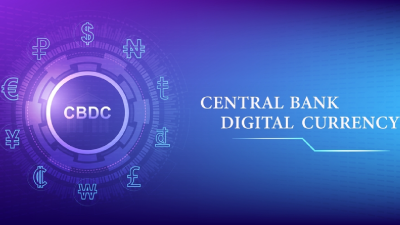Highlights:
- Embedded payments can boost conversion rates by simplifying and speeding up the payment process for users.
- It simplifies the management of transactions by centralizing all payment data in one place.
Embedded payments, an increasingly recognized concept in the realm of digital commerce, entail the deliberate integration of payment solutions directly into the product ecosystem of a software as a service (SaaS) company.
This strategic integration is geared towards seamlessly blending the payment process with the overall user experience, introducing convenience beyond traditional payment methods.
The fundamental design of embedded payments revolves around enabling users to complete transactions without navigating away from the platform’s interface. This innovative approach significantly streamlines the checkout process, contributing to elevated levels of user satisfaction and increased retention rates.
Furthermore, it often encompasses a comprehensive suite of financial tools offered by third-party vendors. These tools may include financial accounts, expense cards, and loan options. This enhances the overall financial functionality available within the platform.
The holistic integration of payment solutions and additional financial tools simplifies transactions and enriches the user experience, positioning embedded payments as a pivotal element in the evolution of digital commerce. Let’s start with the definition.
What are Embedded Payments?
In simple terms, embedded payments make buying stuff online easier. Instead of going to another website or app to pay, you can do it right while shopping. It’s like having a built-in payment option that lets you finish your purchase quickly with just a few clicks.
This saves you from jumping between different websites or apps, making your shopping experience smoother and faster.
Without it, software platforms have to connect with external software their users want, which can be inconvenient without much benefit.
Even though the embedded payment service might still come from an external source, the advantage is that it can be seamlessly integrated into the software. Also, it can be customized to match the platform’s look.
In these cases, the users of the platform and their customers don’t need to deal with a separate service. All the necessary verifications and transactions occur behind the scenes, and payments happen smoothly within the platform itself.
Once you know the basics, delving into the market analysis of the topic becomes more accessible.
Embedded Payments Market Analysis to Guide Businesses
As per Virtue Market Research, the global embedded payments market size is valued at USD 173.60 billion and is anticipated to reach USD 1829.98 billion by 2030, exhibiting a projected CAGR of 40% during 2024-2030.
The market’s resilience and continuous growth are attributed to its persistent innovation, fostering secure and simplified payment solutions. The COVID-19 pandemic acted as a catalyst that accelerated the adoption of embedded payments due to increased demand for contactless methods during remote operations.
Shortly, the market growth is getting driven by the global trend of financial inclusion, particularly in emerging markets where the demand for accessible embedded payment solutions has surged.
Collaboration between fintech firms and traditional financial institutions presents a notable opportunity, fostering innovation and catering to diverse consumer needs.
The above figures demonstrate the usefulness of embedded payments and their many benefits to businesses.
What are the Benefits of Embedded Payments to Businesses?
Embedded payments are like a game-changer in the world of money transactions, and they’re beneficial for all kinds of businesses. Instead of having a separate payment method, embedded payments offer payment options on the websites or apps.
Here are the benefits listed below:
-
Enhanced conversion rates
The integration of embedded payments can enhance conversion rates by simplifying and expediting the payment process for users. This is achieved by directly incorporating it into the platform or marketplace, eliminating the need for users to leave the website or app to finalize their payments.
-
Enhanced data insights
Businesses can leverage embedded payments to gain valuable data insights into customer preferences, spending habits, and demographics. This data is instrumental in refining the customer experience, facilitating informed business decisions, and tailoring marketing campaigns for business growth.
-
Accelerated onboarding
It expedites onboarding new customers by integrating the payment process directly into the platform or marketplace. This eliminates the need for customers to create separate accounts with third-party payment processors.
-
Increased security
It bolsters security measures through encryption and other protective measures, safeguarding customer data. Additionally, they contribute to fraud prevention and help combat various forms of financial crime.
-
Streamlined payments management
Embedded payments streamline payment management by consolidating all payment data in a single location. This centralized approach makes it more efficient to track and reconcile transactions.
In short, they are versatile tools with broad benefits for businesses of all sizes. Their advantages help enterprises to enhance interactions, boost income, and streamline operations.
Understanding the benefits alone won’t help us unless we discover how it influences customer experience and contributes to overall growth.
The Role of Embedded Payments in Shaping the Customer Experience
In the past, software companies saw handling payments costing them money. They usually hired other companies to deal with payments for them. Some companies made money from payments by working with independent sales organizations (ISO), but they didn’t have much control over how customers experienced the payment process. They had to trust these external partners a lot.
Recently, software companies have recognized the importance of regaining control over payments. Nowadays, merchants rely on industry-specific software for various business operations, seeking a unified customer experience that includes payments, scheduling, reporting, planning, and marketing services.
Payments now play a pivotal role in shaping the customer experience, presenting a significant opportunity for software companies.
A well-implemented embedded payments solution has the potential to streamline and revolutionize the journey for both subscribers and their customers, emerging as a key distinguishing factor for software providers.
Are Embedded Payments the Right Choice for Your Business?
Whether you choose PayPal, Amazon, or Buy Now Pay Later (BNPL) payments, leveraging embedded payment links offers numerous advantages. It simplifies payment processing, enhances brand loyalty, and boosts conversion rates.
Improving the customer experience contributes to higher profit margins by reducing abandoned shopping carts and removing obstacles that could hinder a customer from completing a transaction.
With one-click payments, the checkout process becomes significantly more user-friendly, leading to increased purchase frequency. Considering these perks, including embedded payments in your e-commerce strategy is a valuable option.
Dive deeper into the world of finance with our collection of finance-related whitepapers.










